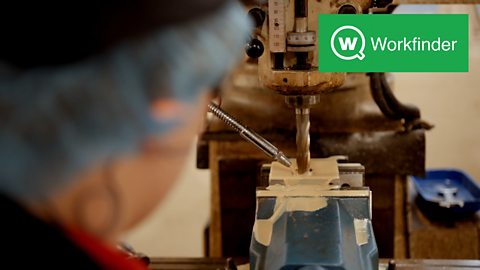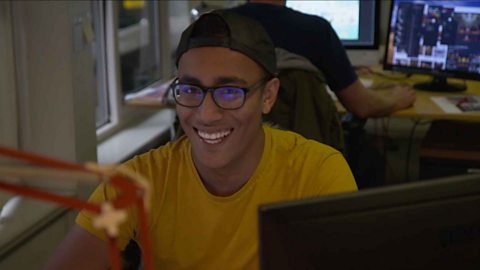Meet Timea and find out about her life as a creative technologist at Uniform. Part of our Bitesize world of work series.
Timea Balo - Creative technologist
A creative technologist role is to combine a playful exploration of technology with an understanding of people to connect people and brands. It all starts with a problem with which we are trying to solve in a creative way. We do research to understand the problem, we generate a lot of ideas to solve that problem and then we only settle on one idea that we want to take further and develop.
I studied computer science in high school so a lot of maths and a lot of coding but on the side I did quite a lot of creative things. I taught myself software like Photoshop and Illustrator and I decided that I wanted to pursue art and design instead of computer science.
So I came here to the UK to study illustration and graphics at Coventry University and I did a sandwich course which means that you study for two years and you have a year where you go on a work placement or study abroad and then you go and finish university, so I did that, studied for two years, I had a one year internship in London as a marketing designer and straight after university I got the job here at Uniform.
The most useful skill I picked up in school is coding. You not only learn how to use a very useful skill but it also helps you build a more logical and methodical way of thinking and you can then you can apply that to loads of different things.
A big part of this role is being very switched on and curious, always knowing what the latest trends are, always being interested in what technologies are out there, being able to articulate an idea, tell a story, creative a narrative, also you need critical thinking to be able to discern and resolve problems. Experimenting a lot is very important because it helps you discover new things and you get through a process where you can understand what works, what doesn’t. You get to fail a lot and that builds resilience.
I always think of my work as my 'nine to five' serious playtime which I think it’s a great thing to have, you can’t really ask more from a job!
I think of my work as my 'nine to five' serious playtime… you can’t really ask more from a job.
- Timea describes her job as combining a ‘playful exploration of technology with an understanding of people' – in order to connect people and brands
- Timea studied Computer Science in high school, which involved a lot of maths and coding. She also taught herself Photoshop and Illustrator, which made her decide to follow a more creative path in art and design
- She studied Illustration and Graphics at Coventry University, as part of a ‘sandwich course’, which is where you study for two years, then spend a year on a work placement or study abroad, before completing your final year at university. During that time, Timea did an internship in London as a marketing designer
- She says a big part of her role is being switched on and curious about the latest trends and technologies. As well as problem solving and critical thinking, experimenting a lot is important – because through that process you can understand what works and what doesn’t. Failing a lot also builds resilience.

Timea's job encompasses art, digital product design and digital media. The information below is based on a similar role as a product designer.
What to expect if you want to be a product designer
- Product designer average salary: £22,000 to £45,000 per year
- Product designer typical working hours: 40 to 42 hours per week, which may occasionally include evenings and weekends.
What qualifications do you need to be a product designer?
You could into this role via a foundation degree, higher national diploma or degree at university, or via a degree apprenticeship. You'll need A-levels, or equivalent, for these routes (one or two A-levels, or equivalent, for a foundation degree or higher national diploma and two or three A-levels for a degree). Alternatives to A-levels include taking a T-level (England-only), which is equivalent to three A-levels. Check with your course provider which alternative qualifications they accept.
Sources: LMI for All, National Careers Service, GOV.UK.
This information is a guide and is constantly changing. Please check the National Careers Service website for the latest information and all the qualifications needed and the GOV.UK website for more on T-levels.
For careers advice in all parts of the UK visit: National Careers Service (England), nidirect (Northern Ireland), My World of Work (Scotland) and Careers Wales (Wales).


Work experience in your area
Find work experience placements with Workfinder.
Tips and advice
Help with interviews, writing a CV and all things work experience related.


Michael: product designer
Michael runs his own business designing golf products.

Careers A to Z: Find your perfect job
From actor to zoologist, find the right fit for you.

Ste: graphic designer. video
Ste is a graphic designer at Brass and explains what he does and how he got there.
